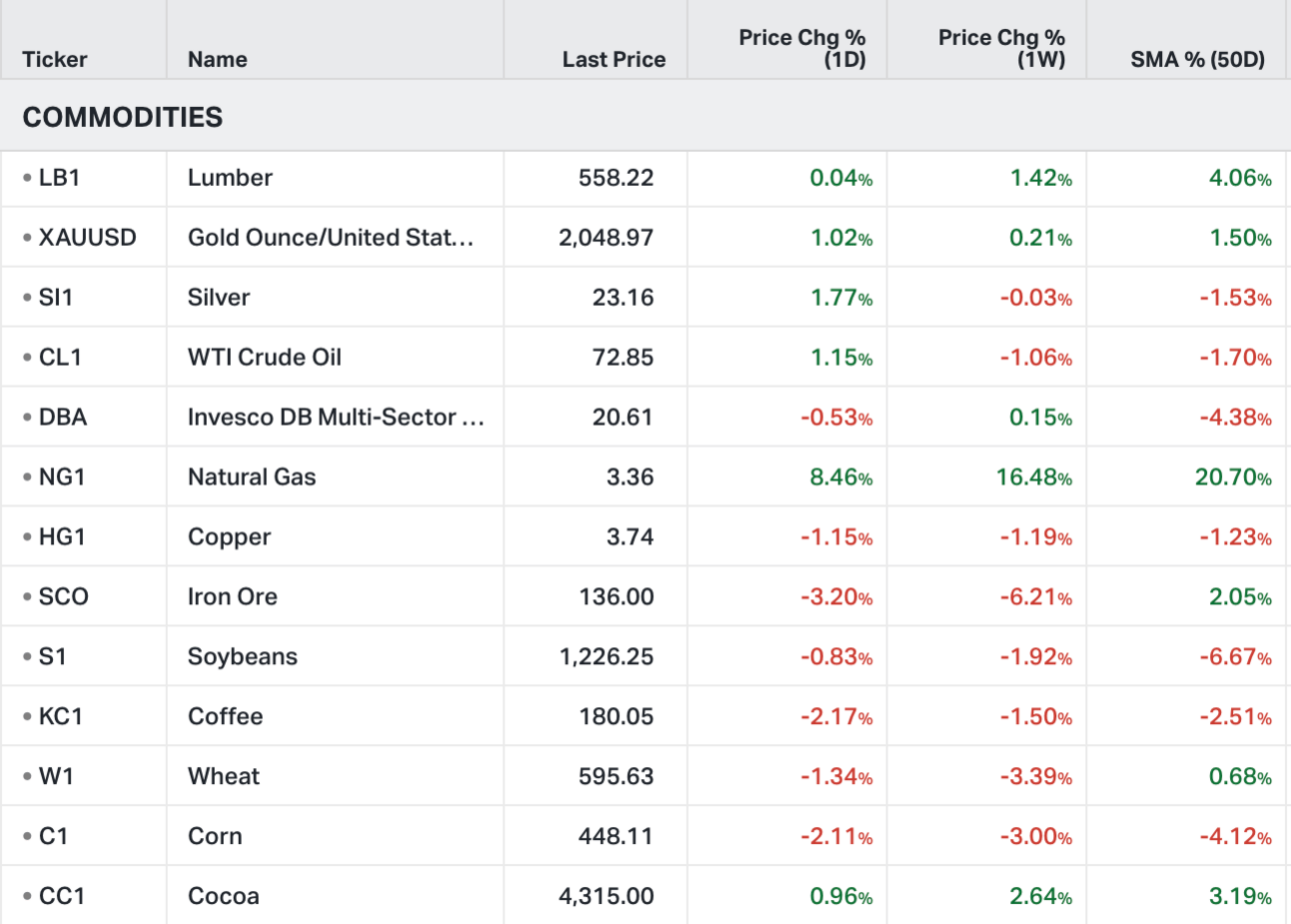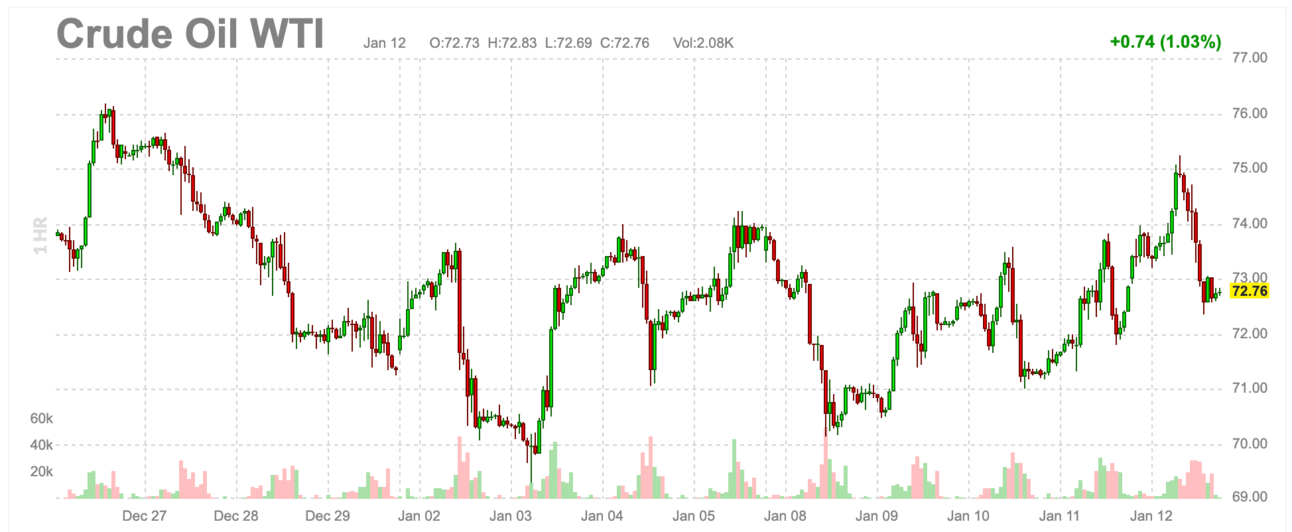- MacroVisor
- Posts
- The Weekend Edition # 118 - Why is everyone talking about QT?
The Weekend Edition # 118 - Why is everyone talking about QT?
Markets recover from hotter CPI; QT; Lackluster start to earnings; Shorter week ahead
Welcome to another issue of the Weekend Edition and the last one for 2023!
Thank you to all who’ve read and welcome to all the new subscribers this week!
Here's what we cover
Market Recap - Markets Recover from Hotter CPI
January 08 - January 12, 2024

Source: Koyfin - Jan 08 - Jan 12, 2024
US Markets are closed on Monday, Jan 15, 2024, for MLK Day.
It’s been an eventful and despite the market seemingly going down on CPI and earnings, the indices closed in the green for the week.
Bank earnings, which set the tone for the quarter, had mixed reactions. Most bank stocks closed lower on Friday after earnings, with the notable exception of Bank of New York Mellon (BK).
Sector rotation shows Consumer Staples and Healthcare moving up the list - both defensive sectors. One reason is the JP Morgan Healthcare and the ICR conferences which were held earlier this week. Quite a few companies revised guidance upwards and had optimistic discussions about outlooks.

Source: Koyfin - Jan 08 - Jan 12, 2024
In terms of market breadth, the upward trend is stalling again after the year-end rally, where we saw breadth improve considerably.

Source: StockCharts.com
Bitcoin is trading much lower since the launch of the Exchange Traded Products, on Wednesday. We saw a spike the previous day on false news and somewhat of a rally once the actual products were approved but, now it would seem that Bitcoin has put in a short-term top and it was certainly a “buy the rumor, sell the news event”. Nevertheless, analysts estimate that these products could attract over $50B in flows in the next year so, the rally may not be over just yet.

1-hour Chart of Bitcoin; Source: Finviz
Commodities

Source: Koyfin - Jan 08 - Jan 12, 2024
It was a choppy week for commodities, particularly oil. The escalations in the Red Sea brought news every day of the week that caused spikes in oil prices, only to fade during the day.

Gold, similarly, has had a tough run being considered a safe haven asset.
Some of the charts in the recap section have been sponsored by Koyfin. We have a special discount of 15% for MacroVisor readers for any new sign-ups to Koyfin. To take advantage of this promo please sign up here - Koyfin MacroVisor Discount
Macro - Why is everyone talking about QT?
Why is everyone talking about the QT (Quantitative Tightening) taper? The last FOMC minutes alluded to a discussion on the path of QT and more recently, the Fed’s Mester talked about the start of tapering QT sometime this year.
So what’s going on and what’s the possible impact on the markets? I’m going to try and give you a very simple, basic explanation.
When the Fed purchases assets, that puts liquidity into the financial system. That’s called Quantitative Easing. The Fed is now rolling bonds off their balance sheet and not re-investing the proceeds - Quantitative Tightening or QT. This removes liquidity from the system. [For a more detailed explanation of the mechanics of QT right now, please visit: How Quantitative Tightening is Supposed to Work].
The RRP or the Reverse Repo Facility is a facility that mainly the banks use to earn some interest on their excess cash. The rates are usually higher because they are for very short tenors (overnight to one week) and the loans are collateralized usually with treasury securities. When banks use this facility, they are also removing liquidity from the system.
Bank Reserves play an important role as well. Bank Reserves, as the name suggests is the minimum amount that needs to be held by banks either in cash in the bank’s vault or with their account at the Federal Reserve. This is done to make sure that the banks always have enough liquidity to meet deposit withdrawals. Unfortunately, the system broke down last March for a few banks but, nothing can stop a run on a bank since these reserves are only a cushion and a fraction of total deposits. They are, however, an important liquidity function and are often used to buy treasury securities as well. (This is where some of the unrealized losses come from).
Finally, you have the US Treasury. When the US Treasury has to refill the Treasury General Account, they issue bills, and bonds, i.e., US Treasury Securities. When people buy these securities, cash is transferred to the TGA and therefore, it removes liquidity from the system.
So we have the equation as such
Fed’s Net Liquidity = Fed’s Assets - (TGA + RRP)

Fed’s Net Liquidity; Source: Gurufocus / FRED
What’s been happening in the past few quarters is that the Treasury has been issuing more short-tenor bills rather than longer-tenor bonds. Given the inversion of the yield curve, the shorter end is paying out a nice interest rate of above 5% in some instances. So what Money Market Funds have been doing is buying more short-term bills from the Treasury with the amounts that they would normally put in the RRP.

Overnight RRP; Source: Gurufocus / FRED
So why then are analysts saying that if RRP declines, that’s a bad thing? Doesn’t the RRP decline mean an increase in liquidity? Technically, yes. But, in this case, the liquidity is moving from the RRP to the TGA. The net effect of this movement doesn’t change the equation, except all the treasury supply is not being absorbed by the RRP. There is still excess supply to be absorbed.
A lot will depend on the Treasury’s Quarterly Refunding Announcement (QRA), set for the end of January. If the Treasury decides, once again, to issue shorter-term bills, the RRP will likely be used more than expected. If however, they decide to issue longer-term bonds, that will push down the price of long-term bonds, increasing long-term rates.
The fear is that with the rate at which the RRP is declining, once this facility is exhausted, bank reserves will start to be used for the purchase of these treasury securities. At the moment, Bank Reserves are at about $3.4T. Liquidity is considered tight when the level falls below 8% to 9% of nominal GDP, which is about $2.5T.

Bank Reserves; Source: Gurufocus / FRED
However, most analysts remember what happened in 2018-2019 during the last QT cycle. The Fed reversed course and cut rates but, there was still a liquidity crunch in the market, SOFR rates shot up and the Fed decided not only to pull the plug on QT but, to also inject $75B into the system. [For a brief on this issue please visit: FOMC Special: A history of the last tightening cycle]
It’s quite likely that the Fed will want to avoid such a situation this time around, and therefore, will start to taper QT so that liquidity conditions don’t become too tight.
The Bank Term Funding Program (BTFP) which was the Fed’s backstop for the banks during the crisis in March 2023, also expires in March 2024. This has been providing additional liquidity in the system or at least, not letting liquidity decline. While some of the lending could be moved to the Fed’s discount window, there’s still likely to be some drag on liquidity from the expiry of this facility.

Fed’s Total Assets; Source: Gurufocus / FRED
What could happen?
The Fed may decide to wait and not intervene until liquidity conditions get dire. That will put pressure on the market and stocks. There is a quite high correlation between market performance and the liquidity in the system.
If the Fed decides to taper QT and start cutting rates at around the same time in May, that should be quite favorable for equities. The Fed is “normalizing” policy and not “easing” which could help boost equity prices.
Bottom Line: The Fed’s balance sheet is still massive and the Fed had indicated keeping QT ongoing even though the start of rate cuts.
While I doubt the Fed will end QT abruptly or even this year, remember that if they decide to start tapering early, they are doing it because there is a crisis and they have to, not because they want to.
Earnings Season - A lackluster start

FactSet Earnings Summary
As I said in the markets recap section, earnings season is not off to a great start with an earnings growth decline of -0.1% for the S&P 500 thus far.
Despite JPMorgan Chase (JPM) falling short of revenue expectations in Q4, its shares are reaching all-time highs before giving up all the gains. This marks the first revenue miss in six quarters, with a 11.7% year-over-year increase to $38.57 billion. Earnings were impacted by a $2.9 billion payment to the FDIC, but excluding this, EPS would have surpassed analyst forecasts.
The provision for credit losses amounted to $2.8 billion, consisting of $2.2 billion in net charge-offs, a $1.3 billion increase from the previous quarter, and $598 million in a net reserve build. The reserve build was influenced by loan growth in Card Services.
The market is optimistic about JPM's positive comments on the U.S. economy, emphasizing resilience and ongoing consumer spending. CEO Jamie Dimon acknowledges government spending's role in the economy but expresses caution due to potential challenges, including inflation stemming from green initiatives, global supply chain restructuring, increased military spending, and rising healthcare costs. Overall, JPM is cautiously optimistic, preparing for various economic scenarios.
Citigroup
Citigroup's Q4 report reveals a $(1.8) billion GAAP loss due to one-time charges amid a major business overhaul, including 20,000 job cuts. While non-GAAP EPS fell by 24%, there were positive aspects, such as a 16% revenue increase in the Services segment. Results have been mixed, as the Bank struggles to keep costs under control and close business in Asia. Citigroup anticipates improved profits as it continues its business transformation.
United Health
UnitedHealth (UNH) took quite a hit to its share price after posting results.
The company experienced its first EPS miss in over five years in Q4, attributed to increased costs. Despite this, the health insurance giant reported robust revenue growth of 14.1% YoY reaching $94.43 billion, exceeding analyst expectations. UNH reiterated its FY24 performance objectives outlined in late November.
However, concerns about rising expenses impacted investor interest. The aging U.S. population is expected to contribute to ongoing cost expansion, prompting UNH to focus on trimming expenses through increased investments in digital capabilities and leveraging technology to reduce administrative costs. While UNH is well-positioned to address cost challenges, a lack of progress in cost management could lead to further selling pressure.
The Week Ahead - Calendars
US Earnings

US Economic Calendar in Eastern Time (Source: Trading Economics)

Closing Thoughts - Shorter week
We have a shorter trading week ahead for the US markets with Monday being a holiday. We still have some important earnings during the week though.
The big investment banks - Goldman Sach & Morgan Stanley - report next week, alongside some of the regionals. We also hear from some of the other finance companies such as Ally and Discover. The major industrials reporting are JB Hunt (Transportation), Fastenal, and PPG. Taiwan Semi also reports next week.
Here’s wishing you safe investing.
Sincerely yours,
Ayesha Tariq, CFA
There’s always a story behind the numbers.
Reply